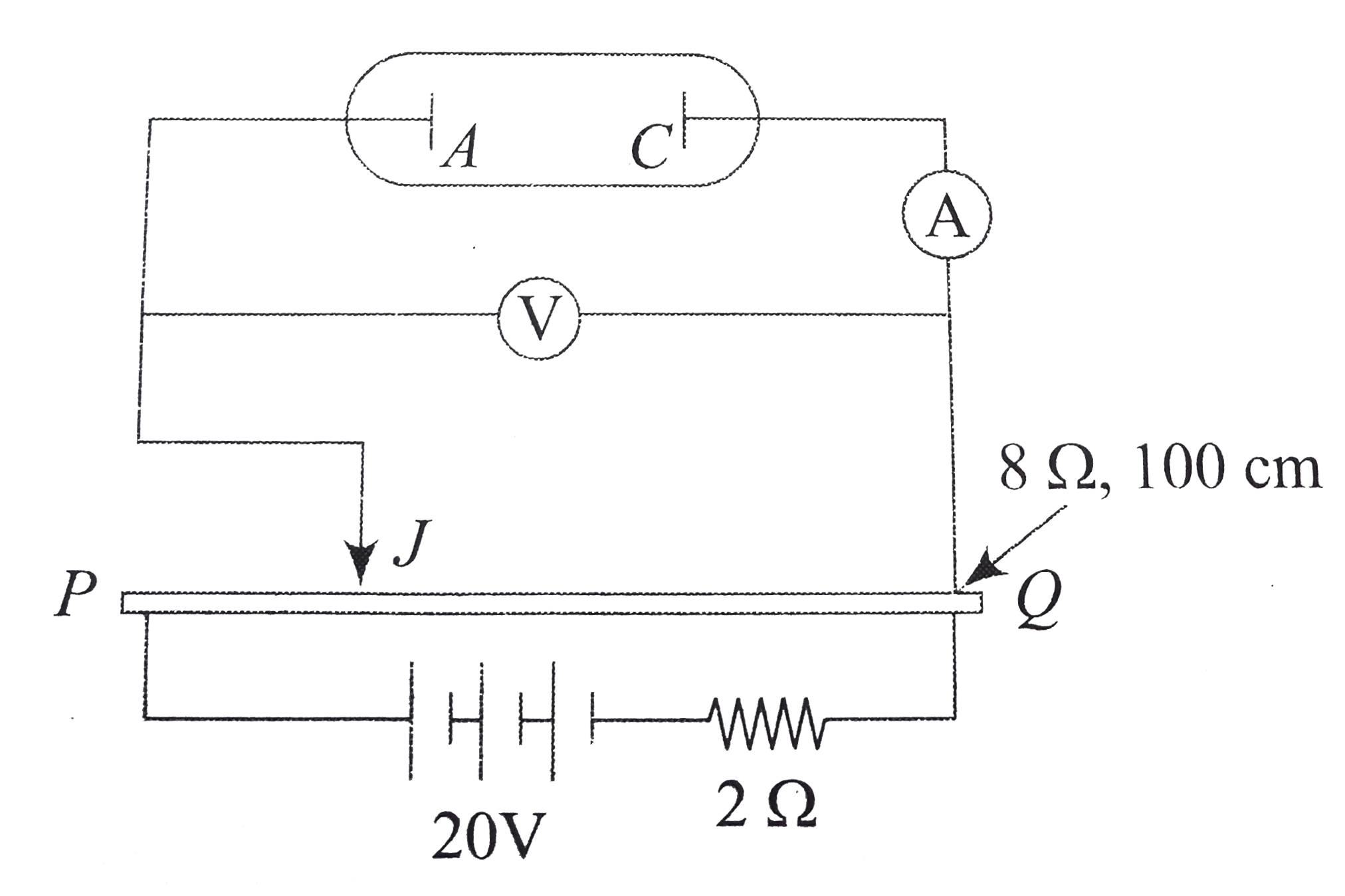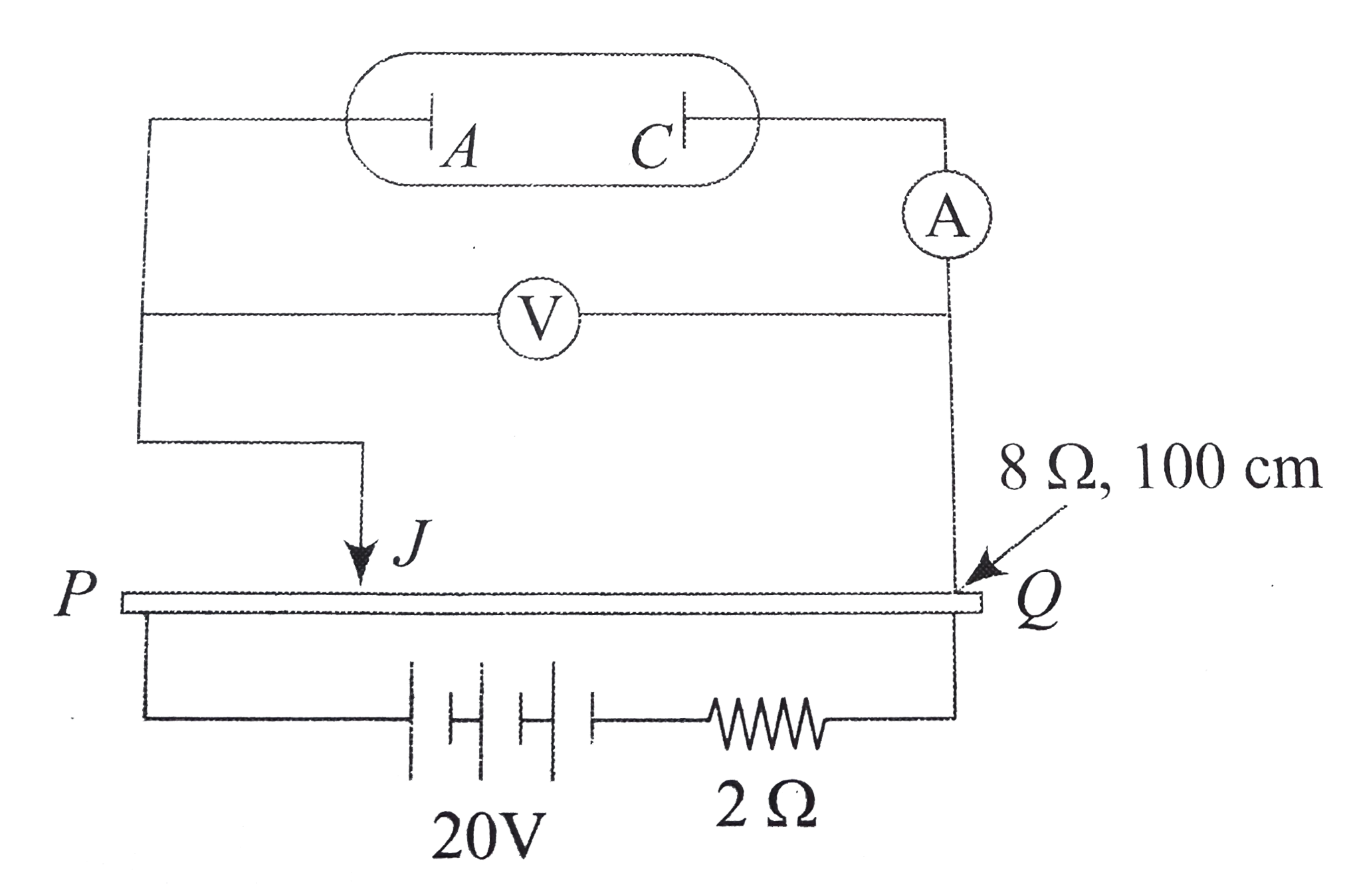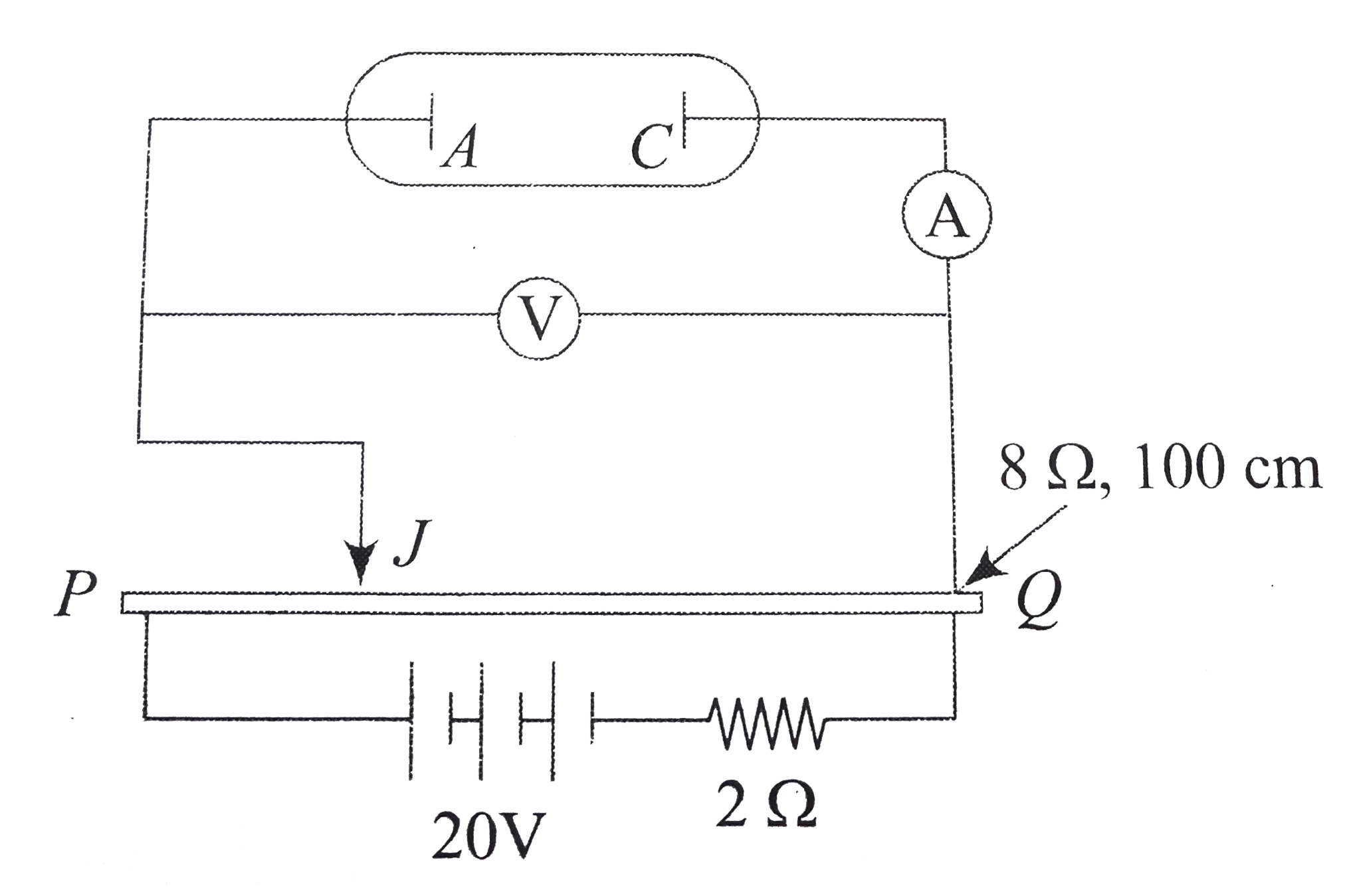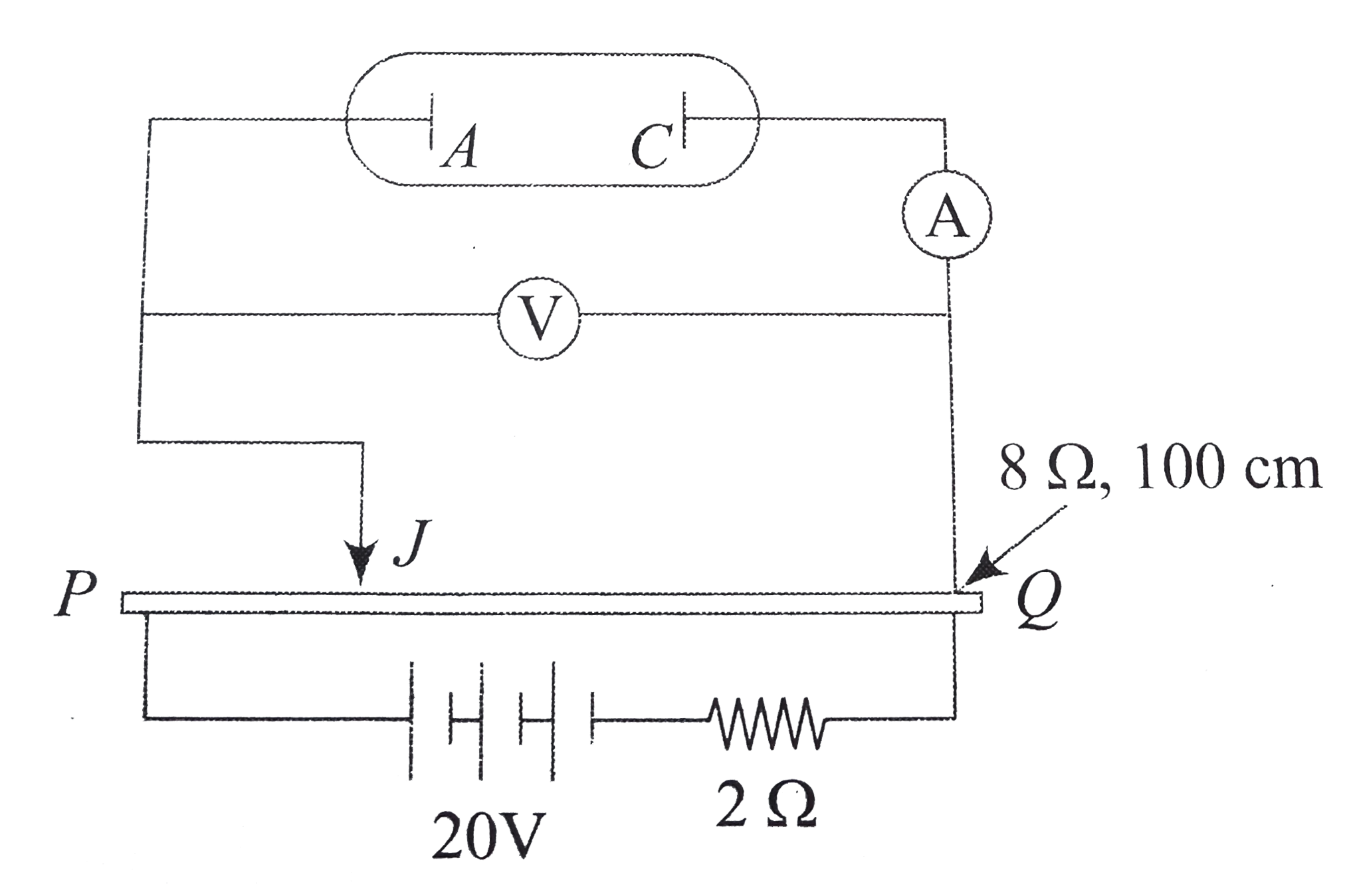Two cities are 80 km apart. The electric power is sent from one city to another city through copper wires. The fall in potential per km is 8 V and average resistance per km is (0.25Ω). The power loss in wire is
20.48kW
12.48kW
20.48W
12.48W
To find the power loss in the wire when electric power is sent from one city to another, we can follow these steps:
Step 1: Determine the total resistance of the wire
The distance between the two cities is 80 km, and the resistance per kilometer of the copper wire is given as 0.25 ohms.
Total Resistance (R)=Distance×Resistance per km=80km×0.25Ω/km=20Ω
Step 2: Calculate the current flowing through the wire
The potential drop per kilometer is given as 8 V. Using Ohm's law, we can find the current (I) flowing through the wire.
Using the formula:
ΔV=I×R
For 1 km of wire:
I=ΔVR=8V0.25Ω=32A
Step 3: Calculate the power loss in the wire
The power loss (P) in the wire can be calculated using the formula:
P=I2×R
Substituting the values we have:
P=(32A)2×20Ω=1024×20=20480W
Step 4: Convert the power loss to kilowatts
To convert watts to kilowatts, we divide by 1000:
P=20480W1000=20.48kW
Final Answer:
The power loss in the wire is 20.48 kW.
---
The distance between the two cities is 80 km, and the resistance per kilometer of the copper wire is given as 0.25 ohms.
The potential drop per kilometer is given as 8 V. Using Ohm's law, we can find the current (I) flowing through the wire.
The power loss (P) in the wire can be calculated using the formula:
To convert watts to kilowatts, we divide by 1000:
The power loss in the wire is 20.48 kW.
Similar Questions
Two cities are 80km apart . The electric power is sent from one City to another city through copper wires . The fall of potential per km is 8V and average resistance per km is 0.25ω . The power loss in wire is
View SolutionTwo cities are 150km apart. Electric power is sent from one city to another city through copper wire. The fall of potential per km is 8V and the average resistance per km is 0.5Ω. The power loss in the wire is
View Solution
Knowledge Check
A small town with a demand of 800 kW of electric power at 220 V is situated 15 km away from an electric plant generating power at 440 V. The resistance of the two line wires carrying power is 0.5Ω per km. The town gets power from the lines through a 4000-220 V step down transformer at a substation in the town.
Estimate the line power loss in the form of heat.
(b) How much power must the plant supply. assuming there is negligible power loss due to leakage?
(c) Characterize the step up transformer at the plant.A400 kWB600 kWC300 kWD800 W

An experimental setup of verification of photoelectric effect is shown if Fig. The voltage across the electrodes is measured with the help of an ideal voltmeter, and which can be varied by moving jockey J on the potentiometer with wire. The battery used in potentiometer circuit is of 20 V and its internal resistance is 2Ω. The resistance of 100 cm long potentiometer wire is 8Ω.
The photocurrent is measured with the help of an ideal ammeter. Two plates of potassium oxide of area 50cm2 at separation 0.5mm are used in the vacuum tube. Photocurrent in the circuit is very small, so we can treat the potentiometer circuit as an independent circuit. The wavelength of various colors is as follows:
Q. It is found that ammeter current remains unchanged (2μA) even when the jockey is moved from the end P to the middle point of the potentiometer wire. Assuming that all the incident photons eject electrons and the power of the light incident is 4×10−6 W. Then, the color of the incident light is
View Solution
An experimental setup of verification of photoelectric effect is shown if Fig. The voltage across the electrodes is measured with the help of an ideal voltmeter, and which can be varied by moving jockey J on the potentiometer with wire. The battery used in potentiometer circuit is of 20 V and its internal resistance is 2Ω. The resistance of 100 cm long potentiometer wire is 8Ω.
The photocurrent is measured with the help of an ideal ammeter. Two plates of potassium oxide of area 50cm2 at separation 0.5mm are used in the vacuum tube. Photocurrent in the circuit is very small, so we can treat the potentiometer circuit as an independent circuit. The wavelength of various colors is as follows:
Q. When other light falls on the anode plate, the ammeter reading remains zero till jockey is moved from the end P to the middle point of the wire PQ. Thereafter, the deflection is recorded in the ammeter. The maximum kinetic energy of the emitted electron is
View Solution
An experimental setup of verification of photoelectric effect is shown if Fig. The voltage across the electrodes is measured with the help of an ideal voltmeter, and which can be varied by moving jockey J on the potentiometer with wire. The battery used in potentiometer circuit is of 20 V and its internal resistance is 2Ω. The resistance of 100 cm long potentiometer wire is 8Ω.
The photocurrent is measured with the help of an ideal ammeter. Two plates of potassium oxide of area 50cm2 at separation 0.5mm are used in the vacuum tube. Photocurrent in the circuit is very small, so we can treat the potentiometer circuit as an independent circuit. The wavelength of various colors is as follows:
Q. Calculate the number of electrons that appear on the surface of the cathode plate, when the jockey is connected at the end P of the potentiometer wire. Assume that no radiation is falling on the plates.
View Solution
An experimental setup of verification of photoelectric effect is shown if Fig. The voltage across the electrodes is measured with the help of an ideal voltmeter, and which can be varied by moving jockey J on the potentiometer with wire. The battery used in potentiometer circuit is of 20 V and its internal resistance is 2Ω. The resistance of 100 cm long potentiometer wire is 8Ω.
The photocurrent is measured with the help of an ideal ammeter. Two plates of potassium oxide of area 50cm2 at separation 0.5mm are used in the vacuum tube. Photocurrent in the circuit is very small, so we can treat the potentiometer circuit as an independent circuit. The wavelength of various colors is as follows:
Q. Which of the following colors may not give photoelectric effect for this cathode? if power of incident light is 4*10^-6 and currenr 2micro ampere.
View Solution
An experimental setup of verification of photoelectric effect is shown if Fig. The voltage across the electrodes is measured with the help of an ideal voltmeter, and which can be varied by moving jockey J on the potentiometer with wire. The battery used in potentiometer circuit is of 20 V and its internal resistance is 2Ω. The resistance of 100 cm long potentiometer wire is 8Ω.
The photocurrent is measured with the help of an ideal ammeter. Two plates of potassium oxide of area 50cm2 at separation 0.5mm are used in the vacuum tube. Photocurrent in the circuit is very small, so we can treat the potentiometer circuit as an independent circuit. The wavelength of various colors is as follows:
Q. When radiation falls on the cathode plate, a current of 2μA is recorded in the ammeter. Assuming that the vacuum tube setup sollows Ohm's law, the equivalent resistance of vacuum tube operating in this case when jockey is at end P is
View SolutionAn experimental setup of verification of photoelectric effect is shown in the diagram. The voltage across the electrode is measured with the help of an ideal voltmetar, and which can be varied by moving jockey 'J' on the potentiometer wire. The battery used in potentiometer circuit is of 20 V and its internal resistance is 2ω. The resistance of 100cm long potentiometer wire is 8ω. The photo current is measured with the help of an ideal ammeter. Two plates of potassium oxide of area 50cm2 at separation 0.5mm are used in the vacuum tube. Photo current in the circuit is very small so we can treat potentiometer circuit an indepdent circuit. The wavelength of various colours is as follows :
_E01_157_Q01.png)
∣∣ ∣∣Light1Violet2Blue3Green4Yellow5Orange6RedλinÅ→4000−45004500−50005000−55005500−60006000−65006500−7000∣∣ ∣∣
It is found that ammeter current remians unchanged (2μA) even when the jockey is moved from the 'P' to the middle point of the potentiometer wire. Assuming all the incident photons eject electron and the power of the light incident is 4×10−6W. Then colour of the incident light is :
View SolutionA small town with a demand of 800 kW of electric power at 220 V is situated 15 km away from an electric plant generating power at 440 V. The resistance of the two line wires carrying power is 0.5Ω per km. The town gets power from the lines through a 4000-220 V step down transformer at a substation in the town.
(a) Estimate the line power loss in the form of heat.
(b) How much power must the plant supply. assuming there is negligible power loss due to leakage?
(c) Characterize the step up transformer at the plant.
View Solution
